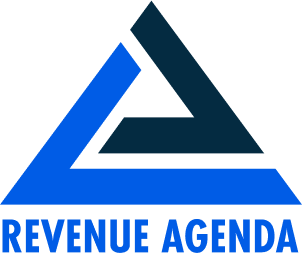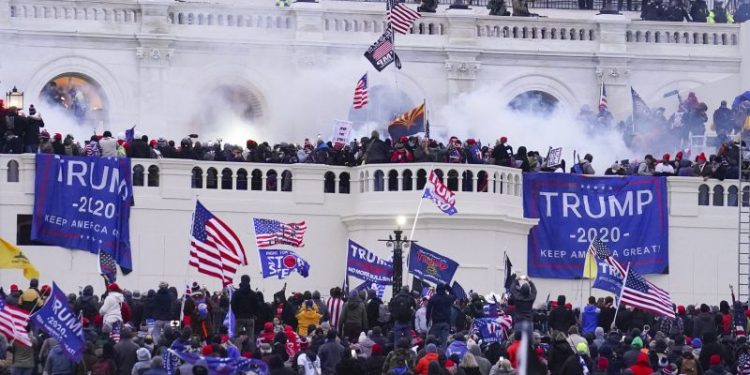The Supreme Court appeared deeply divided Tuesday over whether prosecutors improperly stretched federal law to charge hundreds of participants in the Jan. 6, 2021, attack on the Capitol, a decision that will impact those rioters and, potentially, Donald Trump’s election interference trial in D.C.
The court’s conservatives, who make up a majority on the nine-member bench, appeared most skeptical of the government’s decision to charge participants under a law that makes it a crime to obstruct or impede an official proceeding — in this case the joint session of Congress that convened to formally certify Joe Biden’s 2020 presidential victory.
Several, including Justices Neil M. Gorsuch and Samuel A. Alito Jr., expressed concern through hypothetical scenarios about giving prosecutors broad power that they suggested would allow the government to target peaceful protesters, disruptive hecklers or someone who pulls a fire alarm to delay a vote in Congress.
“Are all of those federal felonies subject to 20 years in prison?” Gorsuch asked.
More than 350 people have been prosecuted under the statute, which was enacted after the exposure of massive fraud and destruction of documents during the collapse of the energy giant Enron and carries a maximum sentence of 20 years. More than 100 have pleaded guilty to or been convicted under the statute.
The court’s ruling has the potential to unwind their convictions and sentences, most of which were well under 20 years, and upend the charges still pending for other defendants. Three Jan. 6 defendants have had their sentences reduced ahead of a decision by the Supreme Court.
The court’s decision, expected by late June or early July, could also further delay Trump’s already stalled trial for allegedly trying to remain in power after his 2020 defeat. Two of the four charges he faces are based on the obstruction statute, and he could move to have those charges dismissed if the Supreme Court rules for the rioters.
Justice Clarence Thomas, who was back in court after an unexplained absence Monday, repeatedly asked whether the Justice Department had ever used the obstruction statute against other violent protesters, suggesting that the government was engaging in selective prosecution.
“There have been many violent protests that have interfered with proceedings. Has the government applied this provision to other protests in the past?” Thomas asked. Democratic lawmakers had urged the justice not to participate in the Jan. 6 case because of efforts by his wife, Virginia “Ginni” Thomas, to overturn Biden’s victory.
Solicitor General Elizabeth B. Prelogar, defending the government, said she could not provide an example in which others had violently stormed a building to block an official proceeding, in part because “I’m not aware of that circumstance ever happening prior to Jan. 6.”
Justice Sonia Sotomayor seemed to reinforce that point when she later said: “We’ve never had a situation before where there’s been a situation like this with people attempting to stop a proceeding violently. So I’m not sure what a lack of history proves.”
Much of the discussion Tuesday centered on how to properly interpret the text of a statute in the Sarbanes-Oxley Act passed by Congress in 2002, after the Enron scandal. The meaning of the word “otherwise” appeared key as the justices discussed how narrowly or broadly prosecutors can apply the statute.
The law applies to anyone who “corruptly — (1) alters, destroys, mutilates, or conceals a record, document, or other object, or attempts to do so, with the intent to impair the object’s integrity or availability for use in an official proceeding; or (2) otherwise obstructs, influences, or impedes any official proceeding, or attempts to do so.”
Prelogar told the justices that the second clause should be read as a “catchall” that prohibits unanticipated methods of impeding an official proceeding, such as occupying the Capitol building and forcing the suspension of Congress’s joint session certifying the election results. The word “otherwise” means “in a different manner,” she said.
Only two justices — Elena Kagan and Sotomayor — seemed to fully embrace the Justice Department’s position. Kagan said Congress intentionally used broad language as a backstop for other potential types of obstruction.
Sotomayor agreed, suggesting that it was a straightforward question: “I don’t see why that’s not the backstop that Congress would have intended, and it’s the language it used.”
The case was brought by Joseph W. Fischer, an off-duty Pennsylvania police officer who attended the Jan. 6 Stop the Steal rally and entered the Capitol that day. Fischer’s trial was put on hold while he challenged the decision to charge him with obstructing Congress — one of seven counts he faces, including assaulting a federal officer in the police line outside the Capitol.
Justice Brett M. Kavanaugh sounded skeptical of the government’s approach when he rattled off the other charges against Fischer and asked the solicitor general why the government needed to include obstruction. He also noted the lengthy maximum penalty.
“Why aren’t those six counts good enough just from the Justice Department’s perspective given that they don’t have any of the hurdles?” he asked.
Prelogar said the average sentence for those already convicted under the statute is 26 months, not 20 years. In Fischer’s case, she said, the obstruction charge was necessary to fully account for his alleged conduct.
“He was prepared to storm the Capitol, prepared to use violence, he wanted to intimidate Congress,” Prelogar said. “He said, ‘They can’t vote if they can’t breathe.’ And then he went to the Capitol on January 6th with that intent in mind and took action, including assaulting a law enforcement officer.”
A divided panel of the U.S. Court of Appeals for the D.C. Circuit upheld the obstruction charge against Fischer, who then appealed to the Supreme Court. In arguing the case, known as Fischer vs. U.S., lawyer Jeffrey T. Green urged the court to reject the government’s broad interpretation of the statute, warning that it would “unleash a 20-year maximum penalty on potential peaceful protests.”
Green said the two sections of the statute must be read together. The obstruction measure is all about preserving the availability of evidence, he argued, as well as Congress’s interest in protecting the integrity of an investigation or other official proceeding.
Chief Justice John G. Roberts Jr. seemed to agree, suggesting that the second section of the statute is defined by what precedes it and cannot be read on its own. He referred Prelogar to a unanimous opinion released by the court Friday and written by Roberts. That decision, in a case involving workers’ rights and arbitration, restated the principle that more general “catchall” terms are “controlled and defined by reference to the terms that precede it.”
“You can’t just tack it on and say, ‘Look at it as if it’s standing alone,’ because it’s not,” Roberts told Prelogar, referring to the government’s broader use of the law.
Two other justices, Amy Coney Barrett and Ketanji Brown Jackson, seemed interested in limiting the ways in which the government can use the statute so that it would apply only to evidence-related obstruction, but without automatically derailing hundreds of Jan. 6 cases.
Barrett asked Fischer’s lawyer whether prosecutors could try to prove his client did interfere with evidence by trying to prevent electoral vote certificates from being counted at the desk of Vice President Mike Pence.
What if, Barrett suggested, “the goal was to shut down the proceeding and therefore interfere with the evidence reaching the vice president?”
Green acknowledged it’s a “closer” question, but insisted that Congress was prohibiting only altering documents or other evidence, not merely delaying their dissemination.
Although Trump’s name was not mentioned during oral argument, the obstruction charges against him are based in part on allegations that he schemed with others to submit to Congress slates of phony electors from swing states and to get lawmakers to toss out lawful ballots.
Even if the Supreme Court decides the obstruction charge does not apply to the actions of the rioters, the special counsel prosecuting Trump’s case has told the high court that the charges should still be valid against Trump.
Fourteen of the 15 judges overseeing Jan. 6-related cases in the D.C. federal courthouse have ruled in favor of the government’s use of the obstruction charge, saying that the rioters who sought to keep Congress from certifying Biden’s victory were “otherwise” obstructing that proceeding. The outlier was U.S. District Judge Carl J. Nichols, a Trump nominee, who ruled for Fischer and said the word “otherwise” refers only to other efforts to tamper with or destroy records or documents.
A divided D.C. Circuit reversed that ruling, which Judge Florence Pan — a Biden nominee — said was too narrow and at odds with the text of the statute. “We cannot assume, and think it unlikely, that Congress used expansive language to address such narrow concerns,” she wrote, joined in part by Judge Justin Walker, who was nominated by Trump.
Judge Gregory Katsas — also nominated by Trump — dissented, writing that a broad reading of the statute would put law-abiding activities like lobbying and protest at risk.
Several justices picked up on those concerns and noted Katsas’s reasoning Tuesday morning. Alito asked Prelogar what would happen if five people stood up in the ornate, hushed courtroom and shouted either that the Jan. 6 defendants were insurrectionists who should go to jail, or are patriots and should be set free, delaying the oral argument proceedings for five minutes.
Would that be a violation of the obstruction law? Alito asked.
The solicitor general told Alito his hypothetical was fundamentally different from what happened at the Capitol on Jan. 6. A more similar scenario, she said, would be if protesters “stormed into the courtroom, overwhelmed Supreme Court Police, and forced justices and other participants to flee for their safety.”
Alito answered: “Absolutely. What happened January 6 was very, very, serious. I’m not equating this with that. But we need to find what are the outer reaches of this statute under your interpretation.”
Spencer S. Hsu, Rachel Weiner and Tobi Raji contributed to this report.














